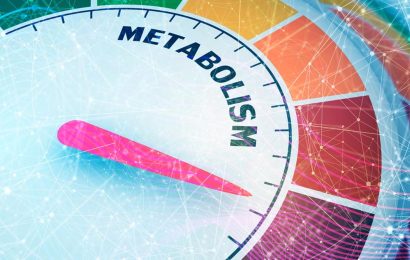Gestational diabetes is a type of diabetes that occurs in pregnant women who don’t already have diabetes. If you’ve been diagnosed with gestational diabetes, understandably you might have a lot of worries, and you might also be wondering what to eat. Read on to learn more about this form of diabetes, as well as eating tips to help you manage this condition.
What is gestational diabetes?
Gestational diabetes is a form of diabetes that occurs in pregnant women. According to the American Diabetes Association, “Nearly 10 percent of pregnancies in the U.S. are affected by diabetes every year.” With gestational diabetes, your blood sugar is too high, and high blood sugar can cause problems to both you and your baby. Fortunately, by managing your blood sugars, you can help ensure that you and your baby stay healthy.
What causes gestational diabetes?
Gestational diabetes means that your body isn’t making enough insulin, a hormone made by the pancreas that helps to regulate blood sugar levels. During pregnancy, your body makes more hormones, and you also gain weight. These changes affect how your body uses insulin, called insulin resistance.
All pregnant women have some insulin resistance during late pregnancy, but some women have insulin resistance before they get pregnant; they then start pregnancy with a higher need for insulin, and this puts them at risk for gestational diabetes.
How is gestational diabetes treated?
Part of managing gestational diabetes is keeping all of your prenatal appointments and following your treatment plan, which can include:
- Checking your blood sugar to make sure that your levels stay in a healthy range.
- Eating healthy foods in the right amounts at the right times.
- Being physically active to help keep your blood sugar from going too high.
- If needed, taking diabetes medicine, which might include metformin or even insulin.
How do you know if you blood sugars are in a healthy range?
Most women with gestational diabetes check their blood sugar with a blood glucose meter. This device uses a very small drop of blood from your finger to measure your blood sugar level. Target blood sugar levels are generally as follows:
- Before meals, at bedtime, and overnight: 95 mg/dl or less
- 1 hour after eating: 140 mg/dl or less
- 2 hours after eating: 120 mg/dl or less
Your health care provider should discuss your target levels with you and advise you as to when and how often to check your blood sugars.
To get cutting-edge diabetes news, strategies for blood glucose management, nutrition tips, healthy recipes, and more delivered straight to your inbox, sign up for our free newsletters!
What can you eat if you have gestational diabetes?
A registered dietitian or diabetes educator can help you develop an eating plan that focuses on food choices that are good for you and your baby. Your plan is tailored to your needs, and should help you know which foods to eat, how much to eat, and when to eat. Why is this important? Food choices, amounts, and timing of meals and snacks all play a role in helping to keep your blood sugars within your target range.
Carbohydrate
One way of helping to manage your blood sugars during your pregnancy is to control the amount of carbohydrate that you eat. Carbohydrate in foods turns into glucose (sugar). Glucose provides fuel for your body, and your baby. But too much carbohydrate can cause your blood sugars to go too high.
Foods that contain carbohydrate include:
- Bread, pasta, rice, cereal, tortillas, crackers
- Fruits and fruit juices
- Milk and yogurt
- Dried beans, peas, and lentils
- Potatoes, sweet potatoes, winter squash, corn, peas
- Sweets and desserts
Your dietitian or diabetes educator should first determine your calorie needs and, from that, determine what your carbohydrate goals are for each meal and snack. Goals may vary, but may look like this:
- Breakfast: 15 to 30 grams of carbohydrate
- Lunch: 45 grams of carbohydrate
- Dinner: 45 grams of carbohydrate
- Daytime snacks: 15 to 20 grams of carbohydrate
- Bedtime snack: 15 to 30 grams of carbohydrate
A serving of a carbohydrate food has 15 grams of carbohydrate. For example, one slice of bread, one small piece of fruit, or 1 cup of milk contain 15 grams of carbohydrate. You can learn how to count grams of carbohydrate by reading food labels, using a food choice list, and by using a smartphone app such as CalorieKing, MyFitnessPal, or Nutritionix.
Eat regular meals
You’ll likely be advised to eat three meals and two to three snacks each day at about the same times each day. Skipping meals or eating too much at a meal can affect your blood sugar levels. Plus, it’s important to eat regularly so that you and your baby meet all your nutritional needs.
Breakfast
The amount of carbohydrate that you eat at breakfast is likely to be limited to 15 to 30 grams of carb. That’s because blood sugars tend to be higher in the morning due to changes in hormone levels.
When you eat carb at breakfast, try to avoid highly sweetened cereals or pastries; even fruit or milk may send your blood sugars too high. Steer clear of fruit juice, too. Choose higher-fiber, whole-grain carbs, such as whole-wheat bread or steel cut oats, and include a protein food, too, such as peanut butter or an egg to help slow the rise in blood sugar after eating.
Foods to include
A healthy eating plan for gestational diabetes is more than just focusing on carbs. Be sure to include:
- Nonstarchy vegetables: leafy greens, broccoli, peppers, cucumbers, green beans, asparagus
- Lean protein foods: chicken, turkey, fish, eggs, lean meat, tofu
- Low-fat dairy foods: low-fat milk and low-fat unsweetened yogurt
- Healthy fats: Olive and canola oil, avocado, nuts and nut butters, seeds
Foods to limit or avoid
Because blood sugar goals are tight when you have gestational diabetes, your doctor or dietitian may advise you to avoid certain foods, including:
- Sugary drinks: soda, juice, sweetened tea or coffee, energy drinks
- Simple carbohydrates: sweetened cereals, bagels, candy, ice cream, potato chips, sugar, honey, syrup
Caffeine and alcohol
You may need to limit your intake of caffeine to no more than 1 cup of coffee or 4 cups of black tea daily, as excess caffeine intake may increase the risk of miscarriage, according to Joslin Diabetes Center.
Alcohol should be avoided during pregnancy.
Vitamin and mineral supplements
You will be prescribed a daily prenatal multivitamin and mineral supplement, along with 1,000 mg of calcium, and 600 IU of vitamin D.
Don’t take any dietary supplements during pregnancy without first checking with your health care team.
Monitoring is important
You will likely be checking your blood sugar four times daily: Before breakfast and one to two hours after each meal is typical.
Your health care team will want to see a record of your blood sugar levels. Most meters have a memory and can be downloaded at each visit, although keeping a written log is helpful if your doctor wishes to review your blood sugar levels between regular visits.
Keeping a log of your food intake helps, too, in case any changes are need to your food choices, food amounts, or timing of your meals or snacks.
Making changes to your eating plan and checking your blood sugars can seem like a lot of work. But remember that the goal is to prevent high blood sugars so that you and your baby stay safe and healthy.
Want to learn more about gestational diabetes? Read “Gestational Diabetes: Are You at Risk?” and “Treating Gestational Diabetes.”





